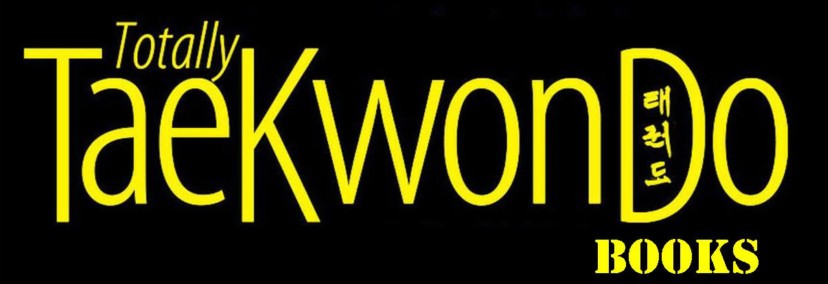
Totally Tae Kwon Do The Global Tae Kwon Do Magazine |

Authors: B. T. Milnes |
Taekwondo Terminology This book is ideal for any student of Taekwondo looking to broaden their Korean vocabulary or improve their pronunciation of Korean terms. The first part of the book includes explanations on the pronunciation of Korean words and the construction of basic sentences. There is also an abbreviated history of the Korean language, and a description of the different romanisations used to represent Korean words with Latin letters. The second part of the book gives information on thousands of Korean terms that are used in Taekwondo to describe movements. Terms are presented in Hangeul and Hanja, and represented according to the Revised Romanisation of Korean. There are also directions for how the term is used specifically within martial arts. Though this book has been written for students of Taekwondo, much of it would also be useful for anyone training in Tangsudo, Gongsudo, or Hapkido. |
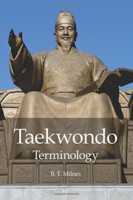
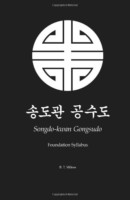
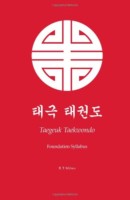
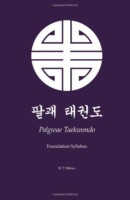
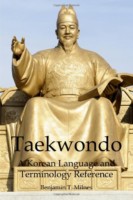
Taekwondo: a Korean Language and Terminology Reference This book contains the ultimate, definitive, authoritative terminology list for Taekwondo |
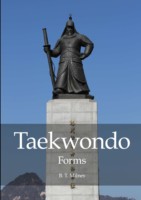
Taekwondo Forms How many forms are there in Taekwondo? Twenty-four? Twenty-five? Actually there are at least seventy-one. This book explores and compares all seventy-one forms from four different styles of Taekwondo: Songdo-kwan Gongsudo, Changheon-yu Taekwondo, Jukam-yu Taekwondo, and Kukki-won Taekwondo. (See the back cover for a full list of the forms included.) Note: there are no photos of the movements in this book - it only describes the movements and then compares forms from different styles. |
Changheon-yu Taekwondo: Foundation Syllabus (Volume 1) Changheon-yu Taekwondo is the style of Taekwondo practised by the International Taekwondo Federation (ITF). This handbook will assist you with the forms you need to learn as a grade (colour belt) student of Changheon-yu Taekwondo: Tenth Grade - Saju Jirugi, Ninth Grade - Chonji, Eighth Grade - Dan-gun, Seventh Grade - Dosan, Sixth Grade - Wonhyo, Fifth Grade - Yulgok, Fourth Grade - Junggun, Third Grade - Toigye, Second Grade - Hwarang, First Grade - Chungmu. The movements for each form are written out in detail, and an extended interpretation of each form is given. It also gives you the Korean vocabulary relevant to each grade. This handbook has not been written for any one association, so it can be read by a student of any Changheon-yu Taekwondo association or school. Jukam-yu Taekwondo: Foundation Syllabus: 2 Jukam-yu Taekwondo is the style of Taekwondo practised by the Global Taekwondo Federation (GTF). This handbook will assist you with the forms you need to learn as a grade (colour belt) student of Jukam-yu Taekwondo: Tenth Grade - Saju Jirugi, Ninth Grade - Chonji, Eighth Grade - Dan-gun (Choi), Seventh Grade - Dosan, Jisang, Sixth Grade - Wonhyo, Fifth Grade - Yulgok, Dan-gun (Bak), Fourth Grade - Junggun, Third Grade - Toigye, Jigu, Second Grade - Hwarang, First Grade - Chungmu. The movements for each form are written out in detail, and an extended interpretation of each form is given. It also gives you the Korean vocabulary relevant to each grade. This handbook has not been written for any one association, so it can be read by a student of any Jukam-yu Taekwondo association or school. Palgwae Taekwondo: Foundation Syllabus: 3 The Palgwae (also written Palgwe, Pal Gwe) forms were part of the official syllabus of Kukki-won Taekwondo (World Taekwondo Federation), until they were replaced by the Taegeuk forms, although many schools still practise them. This handbook will assist you with the forms you need to learn as a grade (colour belt) student of Palgwae Taekwondo: Tenth Grade - Relevant Line Work, Ninth Grade - Relevant Line Work, Eighth Grade - Palgwae Il Jang, Seventh Grade - Palgwae I Jang, Sixth Grade - Palgwae Sam Jang, Fifth Grade - Palgwae Sa Jang, Fourth Grade - Palgwae O Jang, Third Grade - Palgwae Yuk Jang, Second Grade - Palgwae Chil Jang, First Grade - Palgwae Pal Jang. The movements for each form are written out in detail. The handbook also gives you the Korean vocabulary relevant to each grade. This handbook has not been written for any one association, so it can be read by a student of any Palgwae Taekwondo association or school. Taegeuk Taekwondo: Foundation Syllabus: 4 The Taegeuk (also written Taeguk) forms are part of the official syllabus of Kukki-won Taekwondo (World Taekwondo Federation). This handbook will assist you with the forms you need to learn as a grade (colour belt) student of Taegeuk Taekwondo: Tenth Grade - Relevant Line Work, Ninth Grade - Relevant Line Work, Eighth Grade - Taegeuk Il Jang, Seventh Grade - Taegeuk I Jang, Sixth Grade - Taegeuk Sam Jang, Fifth Grade - Taegeuk Sa Jang, Fourth Grade - Taegeuk O Jang, Third Grade - Taegeuk Yuk Jang, Second Grade - Taegeuk Chil Jang, First Grade - Taegeuk Pal Jang. The movements for each form are written out in detail. The handbook also gives you the Korean vocabulary relevant to each grade. This handbook has not been written for any one association, so it can be read by a student of any Taegeuk Taekwondo association or school. Songdo-kwan Gongsudo: Foundation Syllabus: 5 Songdo-kwan Gongsudo (also written Kongsudo, Kong Soo Do) is the Korean variation of Shoto-kan Karate-do. It contributed to the development of Taekwondo, and is still practised at a few schools around the world. This handbook takes you through forms you need to learn as a grade (colour belt) student of Songdo-kwan Gongsudo: Tenth Grade - Kibon, Ninth Grade - Pyeong-an Chodan, Eighth Grade - Pyeong-an Idan, Seventh Grade - Pyeong-an Samdan, Sixth Grade - Pyeong-an Sadan, Fifth Grade - Pyeong-an Odan, Fourth Grade - Cheolgi Chodan, Third Grade - Cheolgi Idan, Second Grade - Cheolgi Samdan, First Grade - Balsae. The movements for each form are written out in detail. The handbook also gives you the Korean vocabulary relevant to each grade. This handbook has not been written for any one association, so it can be read by a student of any Songdo-kwan Gongsudo association or school. Most of this book would also be relevant to students of Dangsudo (also written Tangsudo, Tang Soo Do). |
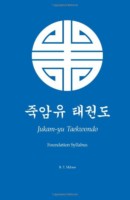
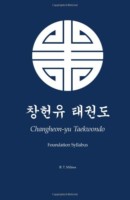
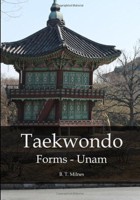
Taekwondo Forms - Unam A 'lost' form is a form that was once practised often by the students of a martial art, but which in time has been forgotten, and information about it lost. Taekwondo is a relatively new martial art Ė being only sixty years old as of 2015. However, in that time, there are a few forms which have been forgotten. Unam is one such Ďlostí form. Practised in the formative years of Taekwondo, the only evidence of it that remains today is in Choi Hong-hiís first edition Taekwondo textbook in Korean. (The form never made it into the English editions.) Now, more than fifty years after the form has been practised, B. T. Milnes has translated the section of Choiís 1959 textbook that describes the movements of the form. With this book, a supplementary text to Taekwondo Forms, find out what became of this ancient form, and why we no longer practise it. This book contains a line-by-line translation of the movements of the form, with detailed annotations as to what particular words and phrases mean, and how the terminology has changed in the decades since. The book also contains a discussion about the form, and a description of the movements using modern terminology, so that you can practise and perform the form yourself. |